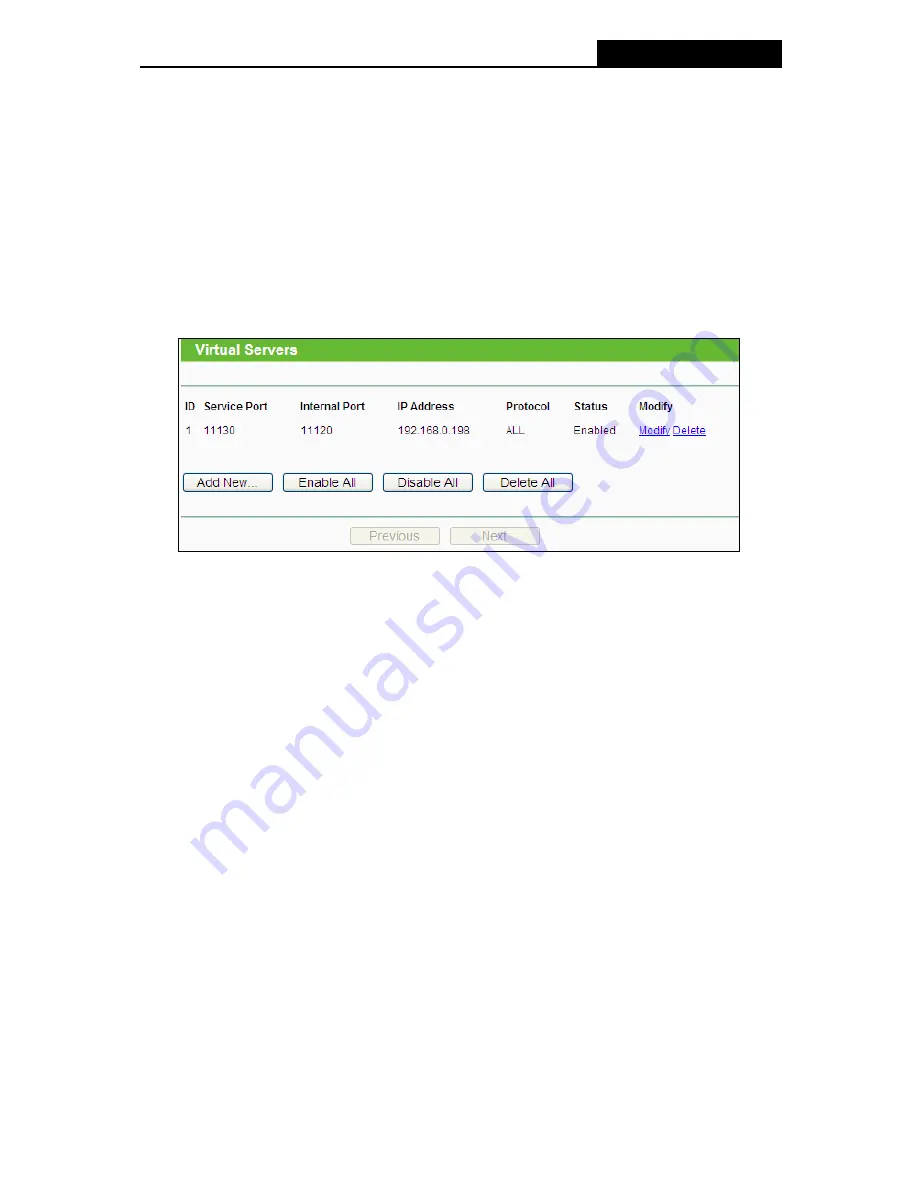
TL-WR941ND
Wireless N Router
Port Triggering
,
DMZ
and
UPnP
. Click any of them, and you will be able to configure the
corresponding function.
4.8.1 Virtual Servers
Choose menu “
Forwarding
→
Virtual Servers
”, you can view and add virtual servers in the next
screen (shown in Figure 4-30). Virtual servers can be used for setting up public services on your
LAN, such as DNS, Email and FTP. A virtual server is defined as a service port, and all requests
from the Internet to this service port will be redirected to the computer specified by the server IP.
Any PC that was used for a virtual server must have a static or reserved IP Address because its
IP Address may be changed when using the DHCP function.
Figure 4-30
Virtual Servers
¾
Service Port -
The numbers of External Ports. You can type a service port or a range of
service ports (in XXX – YYY format, XXX is the start port number, YYY is the end port
number).
¾
IP Address -
The IP Address of the PC providing the service application.
¾
Protocol -
The protocol used for this application, either
TCP
,
UDP
, or
All
(all protocols
supported by the Router).
¾
Status -
The status of this entry either
Enabled
or
Disabled
.
To set up a virtual server entry:
1. Click
the
Add New…
button. (pop-up Figure 4-31)
2. Select the service you want to use from the Common Service Port list. If the
Common
Service Port
list does not have the service that you want to use, type the number of the
service port or service port range in the
Service Port
box.
3. Type the IP Address of the computer in the
IP Address
box.
4. Select the protocol used for this application, either
TCP
or
UDP
, or
All
.
5. Select
the
Enable
check box to enable the virtual server.
6. Click
the
Save
button.
-50-
















































